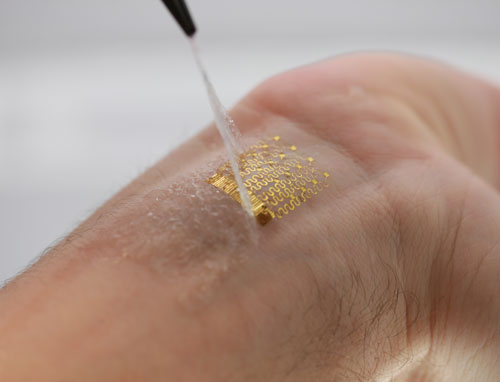Electronic skin takes your temperature |
|
| (Nanowerk Spotlight) Previous work in stretchable, flexible electronics has shown that conventional, silicon wafer based fabrication techniques can be modified to apply electronics conformally to the heterogeneous topography of the skin (in a recent Nanowerk Spotlight we covered design considerations and recent progress in the development of electronic skin). | |
| Additionally, previous work in medical thermal imaging has shown the utility of precision temperature mapping of human skin in the study of pathological conditions that affect how the body regulates temperature. | |
| However, medical thermal imaging suffers from the high cost of infrared cameras (>$100,000 for high-precision models), and the cameras struggle to measure curved or moving surfaces of living tissues. | |
| An international multidisciplinary team including researchers at the University of Illinois at Urbana-Champaign and the National Institute of Biomedical Imaging and Bioengineering (NIBIB) has extended ideas from these previous works to enable continuous mapping of curved, moving skin – or other tissue – temperature, to a precision better than 0.02 °C, that can be manufactured for pennies. | |
| Reporting their results in a recent issue of Nature Materials (« Ultrathin conformal devices for precise and continuous thermal characterization of human skin »), the team demonstrates the development of a device platform that enables high precision temperature mapping of the skin in ways that have, until now, been extremely difficult in research and impossible to implement for widespread use. | |
 |
|
| Image of a 4×4 sensor array after application to the skin using a water-soluble adhesive tape based on poly(vinyl alcohol). (Image: Rogers Research Group, University of Illinois at Urbana-Champaign) |
Read more: http://www.nanowerk.com/spotlight/spotid=33601.php#ixzz2qH7Dr5ha



